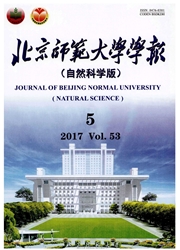

 中文摘要:
中文摘要:
活动节律和集群行为是评价野生动物种群状态的重要参数.本研究自2012年11月至2013年12月在吉林珲春国家级自然保护区利用红外相机陷阱法对东北梅花鹿(Cervus nippon mantchuricus)种群的活动节律和集群行为进行了研究.结果表明东北梅花鹿全年日活动节律具有明显的双峰趋势,主要在晨昏前后活动,且日活动节律存在明显的季节性变化,春夏两季的活动强度较大,秋季次之,冬季的活动强度最小且持续时间最短;监测期内梅花鹿的平均集群大小为(1.42±0.03)只,集群大小和集群类型出现的频次在全年及各个季节间存在极显著差异,其中,1-2个个体出现的频次最高,主要集群类型为雌性单个个体和雄性单个个体,其次为雌性群和母子群.梅花鹿的行为表现差异受生活史特征、气温、日照长度和人类活动的季节性变化等环境条件的综合影响.
 英文摘要:
英文摘要:
Activity patterns and group behaviors are important parameters in wildlife population.According to continuous camera-trap monitoring from Nov.2012 to Dec.2013 at Hunchun National Nature Reserve,Jilin Province,activity patterns and group behaviors of sika deer(Cervus nippon mantchuricus)(as two attributes of community behaviors)were identified.It was found that the activity patterns of sika deer showed a bimodal form,more active at dawn and dusk.Significant discrepancy of the diurnal behavior in different seasons shows that the community is more active in spring and summer,but lowest with shortest duration in winter.The average group size of sika deer is around(1.42 ± 0.03)and the types,sizes and frequencies of grouping vary seasonally.The most frequent assemblage is 1-2individuals with the types of assemblage mainly including individual female,individual male,grouping females and mother-offspring group.Different behaviors are probably the results of environmental influences,including life history traits,temperature,duration of day and human activities.
 同期刊论文项目
同期刊论文项目
 同项目期刊论文
同项目期刊论文
 期刊信息
期刊信息
